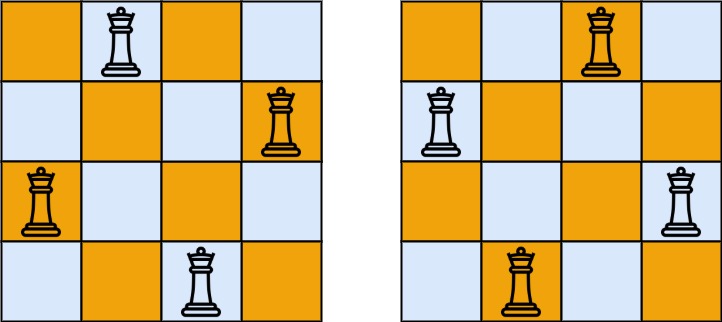52. N-Queens II
Hard
Description
The n-queens puzzle is the problem of placing \(n\) queens on an \(n \times n\) chessboard such that no two queens attack each other.
Given an integer \(n\), return the number of distinct solutions to the n-queens puzzle.
Example 1:
Input: n = 4
Output: 2
Explanation: There are two distinct solutions to the 4-queens puzzle as shown below
Example 2:
Constraints:
1 <= n <= 9
Solutions
